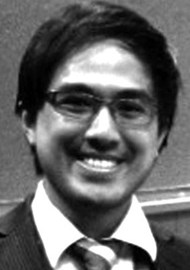The use of transoral robotic surgery (TORS) in the head and neck area has been shown to be a safe and effective technique, achieving good oncological clearance of the oropharynx, hypopharynx, supraglottis and glottic area. However, robotic surgery for the ventral skull base area is still relatively new. The authors reviewed current literature discussing the role of robotic surgery in managing sinonasal and ventral skull base malignant lesions. There are only two surgical robotic systems available currently which are FDA approved: the da Vinci Surgical system and the Medrobotics Flex Robotic system. The advantages of using robotic surgery include three-dimensional visualisation, tremor-free surgery and bimanual surgery. However, robotic surgery does not provide haptic feedback or stereotactic navigation features. Neither system is able to access the sinonasal cavity or the ventral skull base using a purely endonasal approach, with a common limiting factor being the size of the endoscopes and its instruments. There is also a lack of high-speed drills and adequate suction devices. Due to the size of the robotic instruments, which are not designed to fit sinonasal cavities, multiple extended approaches have been described, mostly through cadaveric models, to optimise access and reach the ventral skull base. The approach that has been applied to patients is the combined expanded endonasal approach and transoral approach for resection of adenoid cystic carcinoma of the nasopharynx with extension to the infratemporal fossa and resection of cordoma with extension to the craniocervical junction. TORS/TORS-assisted nasopharyngectomy has been performed in a case series of 12 patients for nasopharyngeal carcinoma with 86% two-year control rate. Robotic surgery for sinonasal and ventral skull base malignancies is still at an early stage. Whilst there are many advantages of robotic surgery, there are still many drawbacks currently limiting its use in this area.




